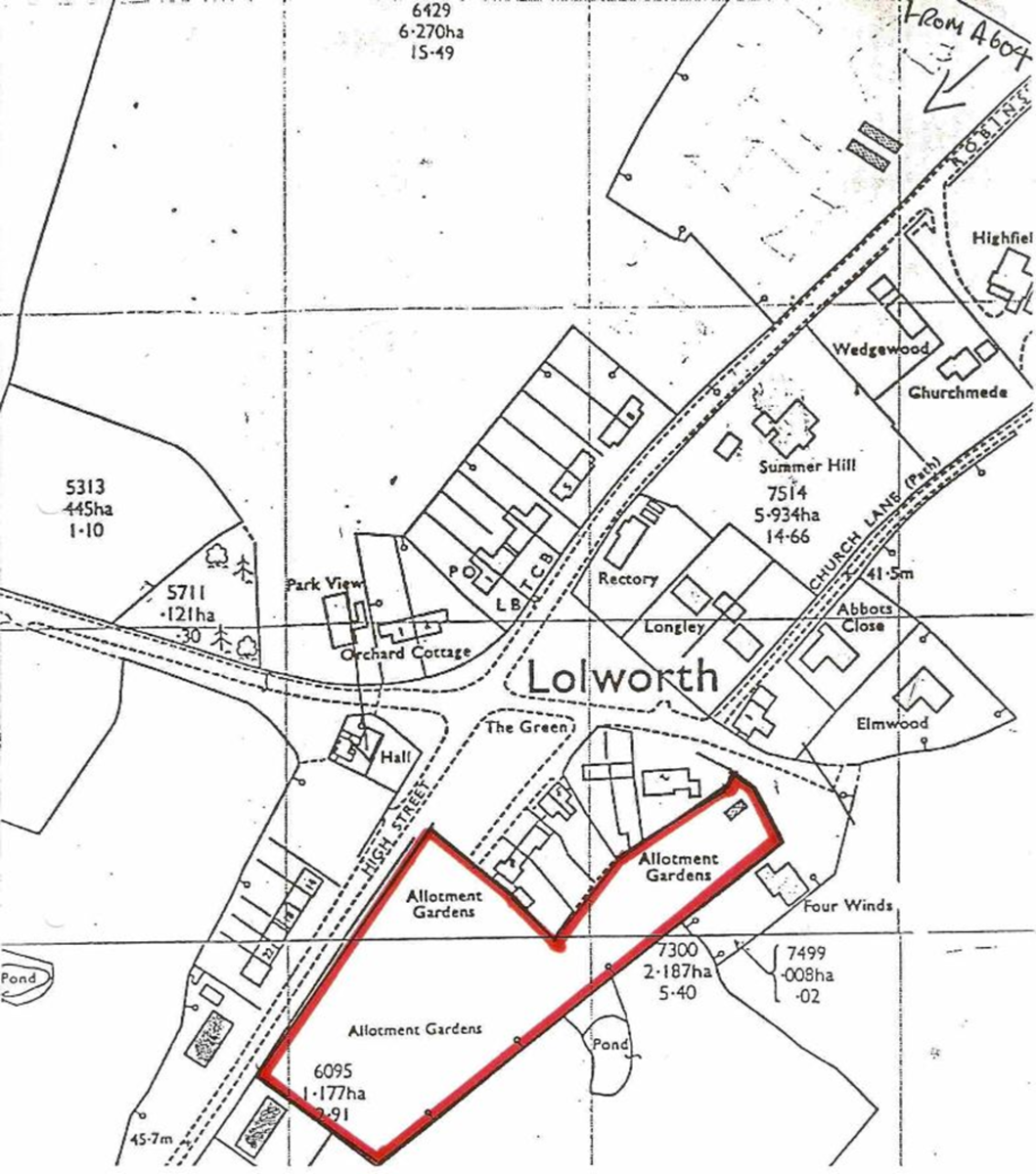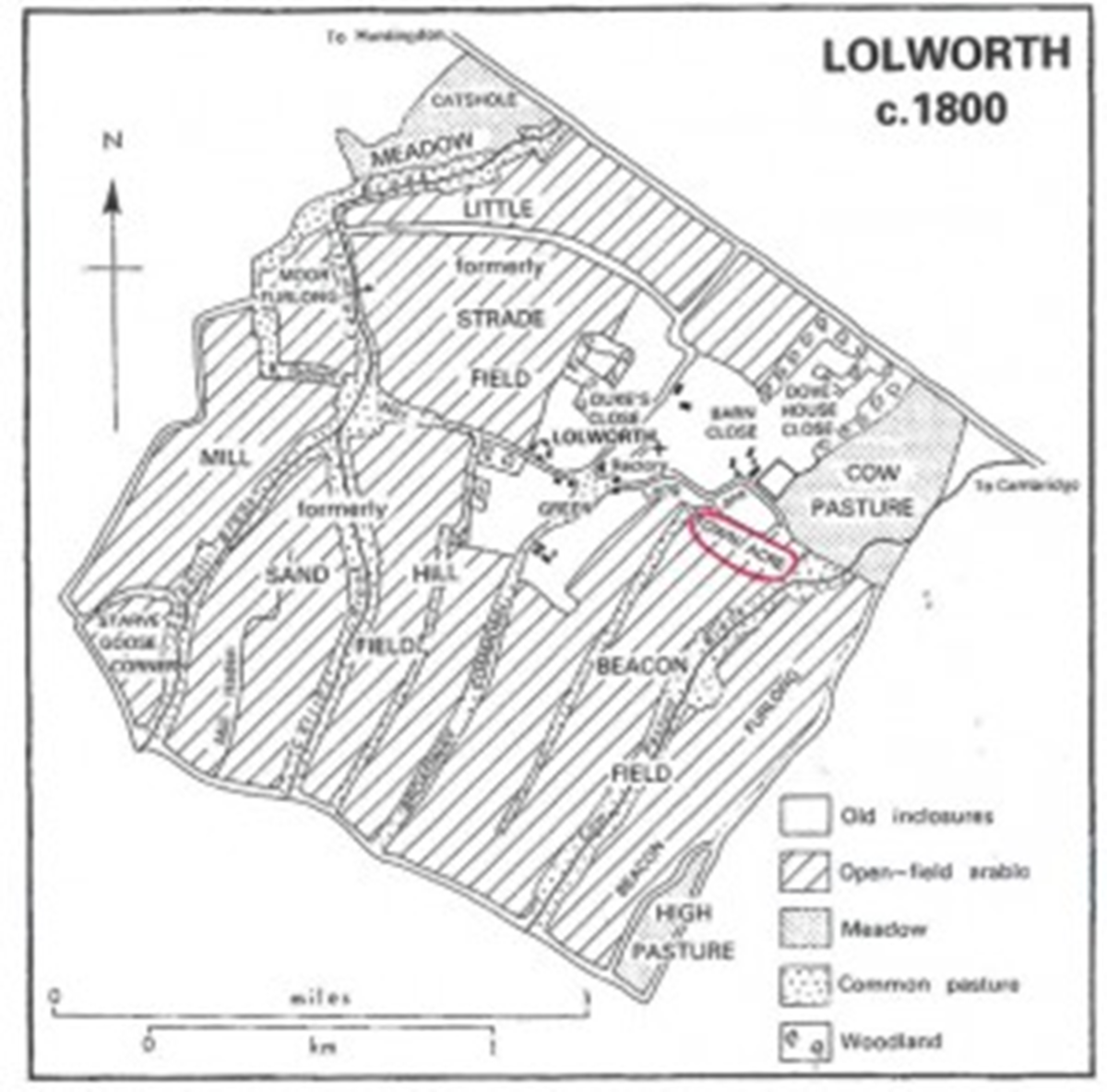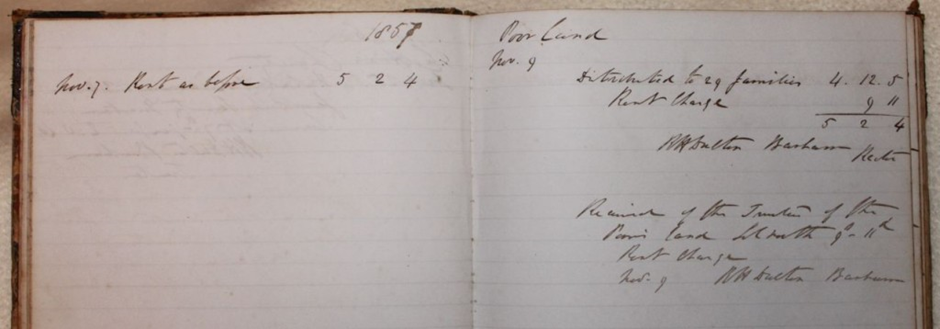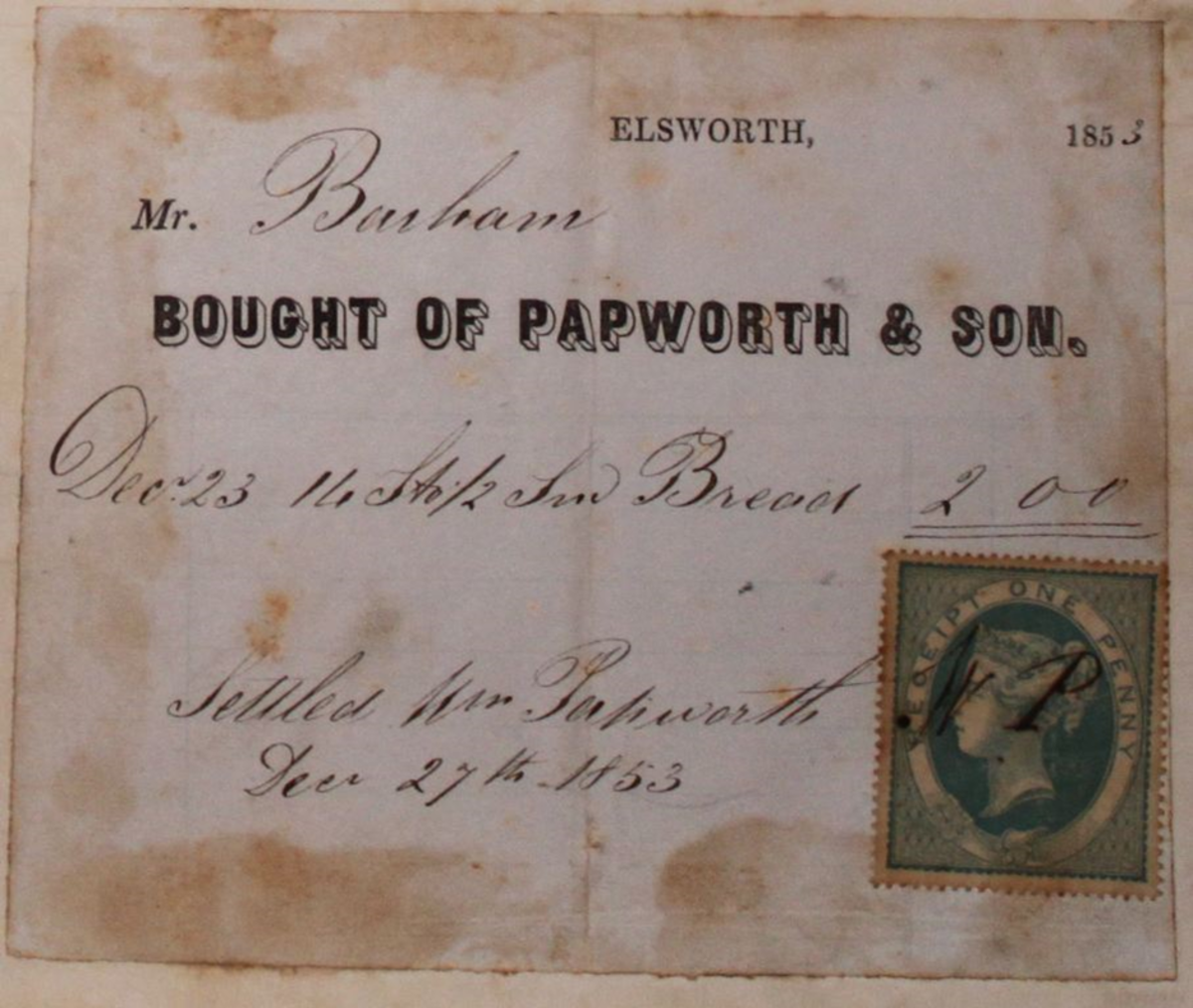TownAcre Charity
With the Poor Act of 1601, a piece of land in the open field called Town Acre, alongside Lolworth Village, was allocated for the relief of poverty in the village and “was subject to tithe, shackage and sheep walk”. It was good quality pasture and was distributed to the poor parishioners for common grazing.
With the Enclosures Act of 1848 this land was lost, but in compensation for the loss of grazing, 2.8 acres for 29 allotment gardens, including a cottage which eventually fell down, was set aside beside the High Street (see maps below)


Accounts from 1853 show that about £5 total rent was collected which was then distributed as cash to about 30 poor families – see 1857 accounts below.

After 1871, surplus income was distributed as coal, which in due course was delivered to “Senior Citizens”. Later until 1994, the rents were used to buy fertiliser for allotment holders. This was deemed to be helping the “poor”!
The Churchwardens were originally the Trustees, but in 1894 the Parish Meeting was set up and so two parishioners then became the Trustees. The Parish Meeting does not own Town Acre, it is registered with the Charity Commissioners, but matters affecting this Charity are normally reported to the Parish Meeting.
In the early 1970s there was a proposal to sell some of the allotments for development to raise money for a new Village Hall. However, the Charity Commissioners made it quite clear that a sale could only be conducted “for the benefit of the Poor of Lolworth” and might even dispense the funds to the poor of surrounding villages. With the increasing problem locally of squatters moving onto Common Land, the Town Acre allotment land was registered in 2005 with the Official Custodian for the Charities so that the Village might have more secure tenure of the allotment area.
The Cotton Charity
Francis Cotton, who lived in Conington, bequeathed £20 in 1804 so that the interest could "be laid out every year in the purchase of bread to be distributed amongst the poor of Lolworth on Christmas Day". His grand-daughter Ann added a further £50 in 1853.
The accounts are available from 1853 and for that first year the interest from Cambridge Savings Bank was £1 and 14 shillings. Ann Cotton added a further 6 shillings to make this up to £2 to buy 14 stones of bread or 200 large loaves (see the account below).
These were distributed to 34 families as stated above. The accounts were signed by the Rev. Barham and Mr R. Dalton, Church Warden, who built the Grange, Lolworth. In 1977, £39 from a Silver Jubilee village barbecue was added to the fund.
About £2 was spent on the distribution of bread for about 190 years until it was discontinued in 1993 when the income was only sufficient to purchase 14 small loaves. In 2003 the Charity Commissioners indicated that the Cotton Charity had outlived its usefulness. As the proceeds could be given to the "poor" of an adjoining village, the remaining £99 in the fund was donated to the Guy Marshall Trust Fund. This was for a young man in Bar Hill who was paralysed after a motor-cycle accident and whose specially converted bungalow had been subject to an arson attack.
There is a painted board in the belfry of All Saints church tower which gives details of the origin of the Cotton Charity.

